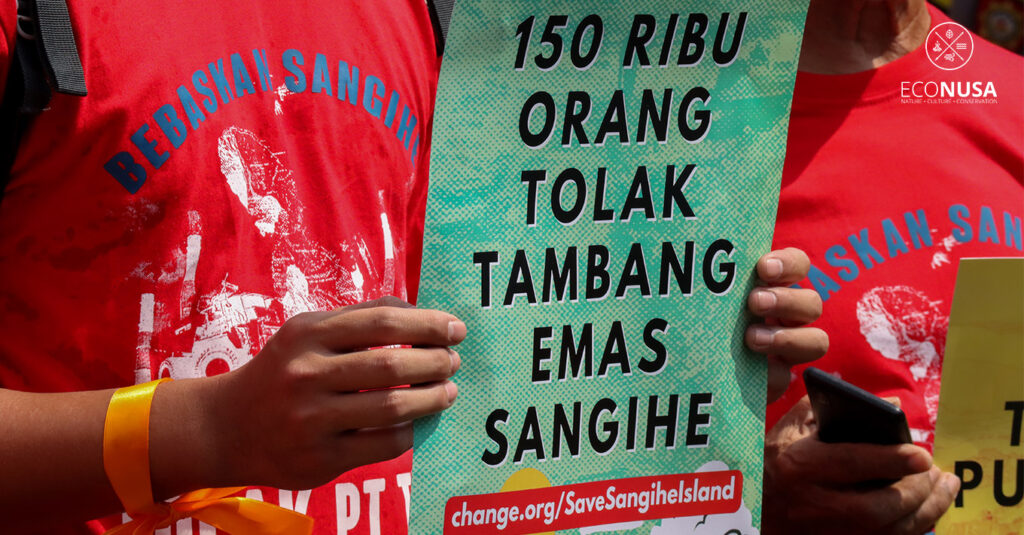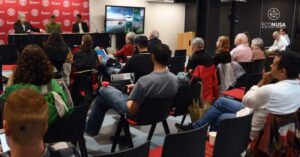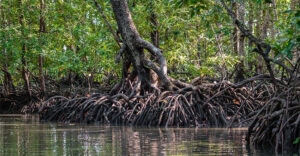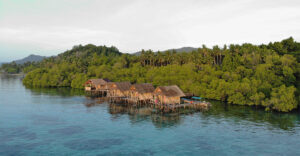
Sangihe is one of the most exterior islands in Indonesia. The island in North Sulawesi shares border with Mindanao Island of the Philippines. Despite the small island, Sangihe has abundant nature surrounded by forests with very protected flora and fauna and so is the sea potentials. Sangihe is on the coral triangle with charming coral and sea biota.
As to Sangihe people, nature is the source of life. Most people are farmers and fishers. The statistics data on maritime and fisheries from the government show that Sangihe Island Regency is the major triangle of fishers economy in North Sulawesi. Sangihe Regency Statistics recorded that in 2015-2018 the percentage of fisheries production in Sangihe always rose every year. “In our region, the major income is from fisherman,” said Ben Pilat, a local Sangihe, on Thursday, 7 July 2022.
However, the source of livelihood is threatened by the existence of gold mining which is managed by the company. Ben is one who got the impact. “The existing mangrove in the mining area has been degraded, the existing coral is also covered by sedimentation,” he said.
Read Also: Anticipating Fish with Plastic Consumption, Sorong City Stops Plastic
Not only preventing beach erosion, mangrove areas serve as one of the favorite habitats for sea fauna. Various fish, shrimp, and crabs use mangrove forests as the spawning, source of food, and protection areas from predator.
When mangrove is degraded, it will decrease the fauna population. Like mangrove, coral will play a major role to the life of sea biota. Coral becomes the spot for feeding, breeding, and habitat for sea animals. The sedimentation from mining will make water dirty and prevent sunlight to the water. Whereas, coral essentially needs sunlight to grow well. Barus (2021) in a journal entitled “The Relationship of Sedimentation and Percentage of Coral Cover at Lampung Bay Water” concluded that the higher sedimentation pace, the lower the life of coral cover will be.
The degraded mangrove and coral will disrupt the life of sea biota, including fish. As a result, fish will seek further place from the shore which pushes the fishers to have extra efforts to catch them. Ben and his colleague who formerly could catch fish surrounding the island, now should travel farther than before.
Read Also: Civil Society Coalition Drafting Village Regulation to Protect Coastal Areas
“The fish used to breed closely, but when they grow bigger, they go farther away and this affect the farther catch,” said Ben. The condition has increased the boat fuel consumption higher. He said that the mining does not only make the fish away but also contaminate the surrounding environment with toxic waste. Some of the waste flows through the sea. “Fish is contaminated by toxic waste,” said Ben.
Journal written by Mustafa (2021) concluded that the coastal areas of Sangihe Island is severely contaminated by the heavy metal of copper (Cu) and lead (Pb). Fish which is on the top of food chain of aquatic organism could accumulate the heavy metal from the contaminated water. The pollution resulted from mining activity affects the fish quality.
The existence of mining does not merely affect the fishers’ lives but the whole surrounding communities. Pattimahu (2021) in a journal entitled “Gold Mining Impact to Environment at Tamilouw Village, Amahai Sub-District, in Central Maluku Regency, he wrote that exploration of coastal areas could influence the topography of coastal areas permanently. This could cause landslide on the main road and thus disrupt the activity of coastal community.
Read Also: Maritime and Fisheries Injustice Needs Standpoint
Ben expected to stop the mining. The Manado Administrative Court (PTUN) has instructed the Government of North Sulawesi to revoke the decree on gold mining environmental permit in Sangihe Island. “Stop any kinds of environmental destruction. Because our region (Sangihe) is mining oriented, but minapolitan,” said Ben. Minapolitan is a region-based economic development concept of maritime affairs and fisheries with an integrated management.
Regarding the condition, the people on the Save Sangihe Island (SSI) Coalition proposed a petition in Change.org to reject the gold mining of PT Tambang Mas Sangihe (TMS). The presence of gold mining will reduce more than half of Sangihe Island as the operational areas. Without any measure, the condition will destroy forest and sea ecosystem in Sangihe in which community daily life relies their live on them.
Editor: Leo Wahyudi & Nur Alfiyah








